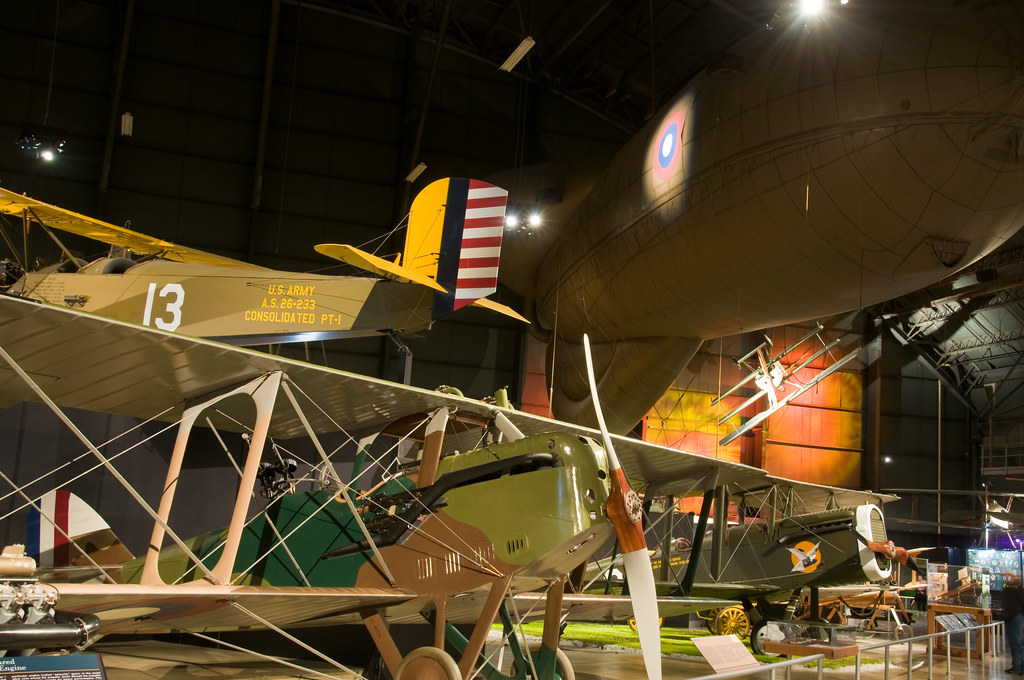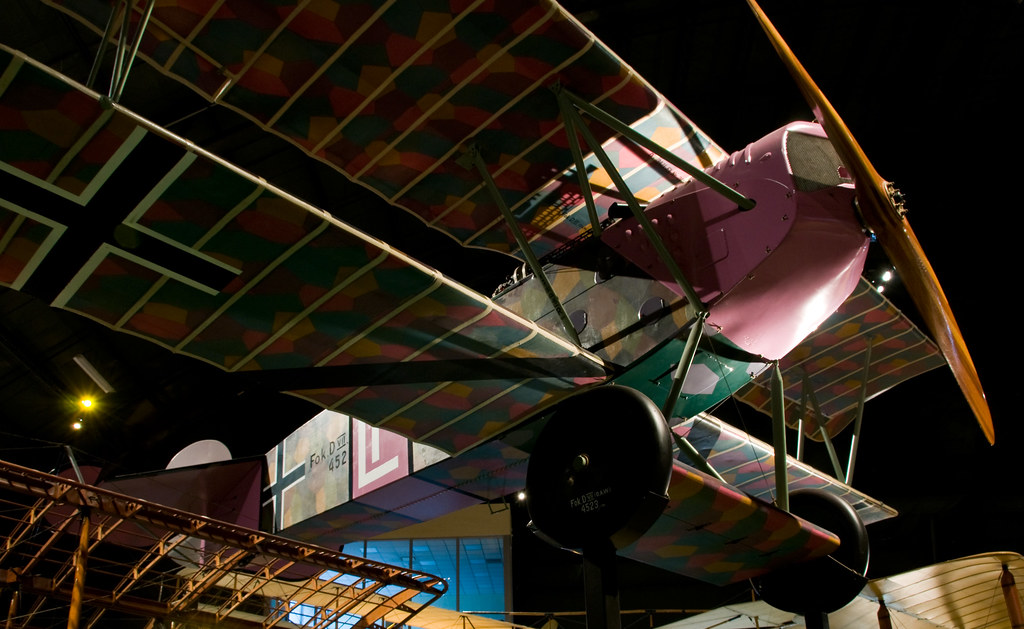
Designed in 1917 by Capt. Georges LePere, a French aeronautical engineer working for the U.S. Army Air Service, the LUSAC 11 was the result of efforts to get an American built fighter into combat as soon as possible. The acronym "LUSAC" stood for LePere United States Army Combat. LePere designed the LUSAC 11 to be a combination fighter, light bomber and reconnaissance aircraft that carried a pilot and an observer/gunner. Capt. LePere, along with several other French aviation engineers, worked on the design at the Packard Motor Car Co. of Detroit, Mich. Packard provided design and fabrication space and additional engineers, and the first prototype was completed in April 1918. After the three prototypes received generally favorable reviews from test pilots at Wilbur Wright Field, Ohio, the Bureau of Aircraft Production planned to order as many as 3,525 LUSAC 11s. At war's end in November 1918, however, the Bureau cancelled its contracts, and only 28 production aircraft were built (with only seven of these built before the Armistice, none saw combat). The aircraft continued to fly in the Air Service, and specially modified LUSAC 11 became famous by setting a number of altitude records at Wright Field in the early 1920s.
The DH-4 was an ever-present element of the U.S. Army Air Service both during and following World War I. When the United States entered WWI in April 1917, the Aviation Section of the Signal Corps only had 132 aircraft, all obsolete. Modeled from a combat tested British De Havilland design, the DH-4 was the only U.S. built aircraft to see combat during WWI. With inadequate funding to buy new aircraft, the newly created U.S. Army Air Service continued to use the DH-4 in a number of roles during the lean years following the war. By the time it was finally retired from service in 1932, the DH-4 had been developed into over 60 variants.

Fokker Doppeldecker VII
First appearing entering combat in May 1918, the Fokker Doppeldecker VII quickly showed its superior performance over Allied fighters. With its high rate of climb, higher ceiling and excellent handling characteristics, German pilots scored a remarkable 565 victories over Allied aircraft during the month of August alone. Designed by Reinhold Platz, the prototype of the Doppeldecker VII flew in a competition against other new fighter aircraft in early 1918. After Baron Manfred von Richthofen, the famous Red Baron, flew the prototype and enthusiastically recommended it, the D. VII was chosen for production. To achieve higher production rates, Fokker, the Albatross company and the Allgemeine Elektrizitats Gesellschaft (AEG) all built the Doppeldecker VII. By war's end in November 1918, these three companies had built more than 1,700 aircraft.

Caproni Ca. 36
During World War I, Italian aeronautical engineer Gianni Caproni developed a series of multi-engine heavy bombers that played a key role in the Allied strategic bombing campaign. His bombers were produced not only in Italy, but also in France, Great Britain and the United States. In late 1914 Caproni designed the Ca. 31, powered by three Gnome rotary engines. The following year, Caproni produced a new version, the Ca. 32. Very similar to the Ca. 31, it had three FIAT 100-hp water-cooled in-line engines. Three months after Italy's entry into WWI, the first Ca. 32s attacked an Austrian air base at Aisovizza, and by the end of the year, regular raids were being mounted against other Austrian targets. Caproni continued to refine his successful design with the introduction of the Isotta-Fraschini powered Ca. 33. Toward the end of the war the definitive version, the Ca. 36, went into production. Changes from the Ca. 33 were small but included five-section wings that made disassembly and surface transportation easy. Ca. 36s remained in Italian Air Force service as late as 1929.

No comments:
Post a Comment